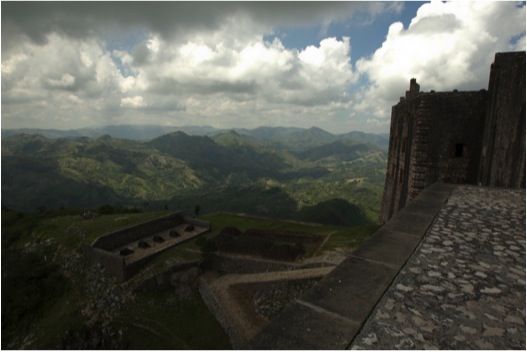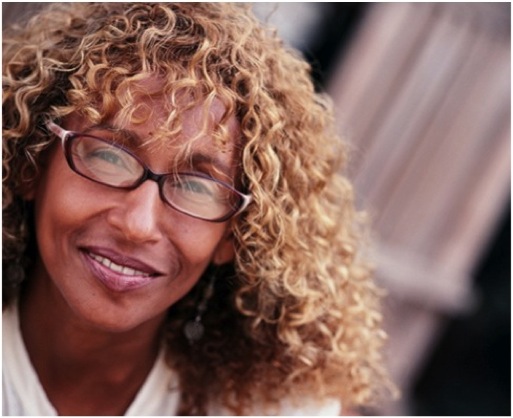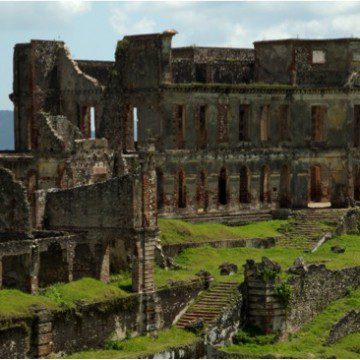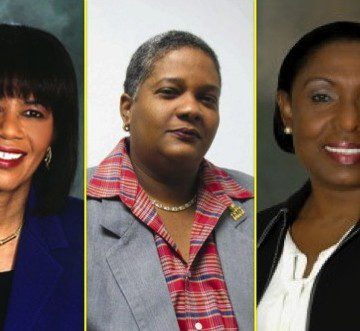Ilio Durandis: Volunteering in Leogane
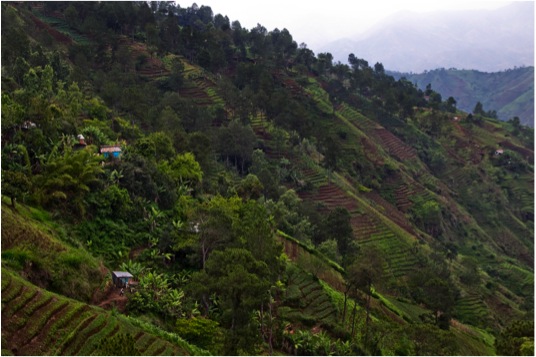
Above: forests in Haiti (UN Photo/Logan Abassi)
By Ilio Durandis
CJ Contributor
On Sunday, Nov. 6, more than 400 volunteers boarded two Delta Airlines charter flights en route to Haiti to take part in a Habitat for Humanity (HFH) construction project in Leogane for a week. On one of the planes, were former president Jimmy Carter and his wife Rosalynn Carter, both very active in the works of Habitat for Humanity in the United States and throughout the world.
I, a native of Haiti, was of course very excited to be part of this project. I was able to volunteer because of a sponsorship from the American Red Cross (ARC), which picked up the cost of the trip for a few Haitians or Haitian-Americans living outside of Haiti, myself included. Early that Sunday, all staff of HFH and Volunteers were up and ready to get into Haiti. For many of the volunteers, it would be their first time in Haiti, and the night before, during the opening ceremony they were warned to be shocked, saddened, overwhelmed, frustrated, confused, angry, energized and transformed from what they would see and experience.
My flight landed at the Toussaint l’Ouverture airport in Port-Au-Prince a few minutes past 12 PM. On the plane, we were instructed to fill out our customs and immigration forms correctly because, as normally done on a commercial flight, all passengers must get off the plane and check with immigration to make sure of each individual’s identity. But in this case, we all received special treatment. Passengers got off the plane to quickly get on a bus waiting on the tarmac to bring us to Leogane. A young lady got on the bus, and asked us for our passports and all the forms so they could take care of the immigration on our behalves. None of us saw an immigration officer upon our arrival in the country. Now, this is what I call a country that is wide open.
From the plane to the bus, we were excited to finally be on our way to Leogane, where a long week was awaiting us. Of course, on this quick ride, many first-time visitors of Haiti would get their first impression of a country that, for the most part ,they only knew about because of the earthquake or past natural disasters. And, as they say, one never gets a second chance to make a first impression. It is likely that for many of the volunteers, the Haiti they saw in the one-hour drive would be the way they would always remember Haiti. Now, you might be asking what they saw.
Less than 100 yards from the airport, the sight of old, run-down tarps and tents, children with no underwear, young men taking a bath in plain view and filth were the welcoming signs to the many volunteers. As the bus continued on its way south, passing by Site Soley and LaSalline neighborhoods onto Route Nationale Number 1, the volunteers could not resist the temptation of capturing the faces of poverty.
Those pictures would be their reminders of what poverty looks like, and reaffirm their reasons to have volunteered in the first place. It all started to make sense to them. I could hear the murmurs; feel the sadness, pity, and sympathy as they clicked away taking one snapshot after another. Ironically, the Dominican buses had elevated seats, which allowed the passengers to look down on the natives, as they snapped away with their cameras and camcorders.
The Haiti that they saw was indeed one that was in need of almost everything, from clean water to safe housing and everything in between. The hopelessness in the eyes of the Haitian people got a brief boost of hope by seeing the buses, mostly full of foreigners, coming into their country, without knowing exactly where they were heading. But their mere presence was enough of a reason to hope.
I can never understand why foreigners are so passionate about photographing or videotaping a naked child or school children in a poor country. It is as if those children are that much different than children elsewhere in the world. Instead of justifying the human suffering in countries like Haiti by taking snapshots of the natives, it would be wiser to focus the lens on the landscape, where natural beauty is waiting to be exposed. Before you click away, ask yourself if you would take the same shot if you were in New York City, Paris or wherever.
My excitement about this project was mostly because it was a great way to give back to my fellow compatriots, who have lost everything and are still enduring every difficulty that life is throwing at them. It was a way for me to tell them that they are not forgotten and that they are not in the struggle for a better tomorrow alone. It is easy to affix the hope of the country on foreign missionaries or investors, but it is very important for those living at home to know that the Haitian Diaspora is willing and ready to be part of whatever future that is awaiting the country.
It was a lot of joy to work alongside the future homeowners, like Benito and Mireille, who had nothing but praise for HFH. They were very grateful that they finally would be able to abandon their lousy tents for a home. They have high hopes for their new community, such as the possibility to get a job, send their kids to school, and most certainly, to be safe in a place they can call home.
We should never forget the basics of what makes us all human. Poor or not, someone’s dignity must always be respected. Haiti is so much more than what the eyes can see; only if a camera lens could really capture the essence and potential of the country and its people.
Ilio Durandis, a Caribbean Journal contributor, is the founder of Haiti 2015, a social movement for a just and prosperous Haiti. He is a columnist with The Haitian Times.

